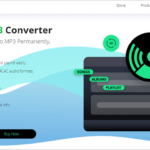How To Improve Music Sight-reading Skills : Sight-reading is key for musicians, no matter the instrument. It means reading and playing music for the first time, without rehearsing. This skill opens doors, letting you accompany others or learn new music easily. It also boosts your confidence and fluency in performing.
This article will dive into the details of sight-reading. We’ll talk about why it’s important and give you tips to get better at it.
Key Takeaways : How To Improve Music Sight-reading Skills
- Sight-reading is a complex skill that involves the simultaneous processing of rhythm, pitch, and keeping time while playing unfamiliar music.
- Developing a solid foundation in music theory, including mastering the musical alphabet, understanding the staff and clefs, and practicing rhythmic and melodic dictation, is crucial for improving sight-reading skills.
- Consistent practice and exposure to new sight-reading materials, along with the use of sight-reading resources and materials, can help you become a better sight-reader.
- Recognizing patterns and intervals, as well as developing finger dexterity and technique, can significantly enhance your sight-reading abilities.
- Sight-reading is an invaluable skill for musicians, as it can improve overall musicianship, performance confidence, and the ability to learn and adapt to new music quickly.
Understanding the Complexities of Sight-reading
Sight-reading is a skill that combines visual, mental, aural, and physical abilities. It’s different from reading words because music has two dimensions. The horizontal shows rhythm, and the vertical shows pitch.
The Two-Dimensional Nature of Music Notation
When sight-reading, you look at the music from left to right. You follow the rhythm and check the notes’ vertical position for pitch. This requires a lot from your brain, as you process information from the instrumental notation and sheet music at once.
Simultaneous Processing of Rhythm and Pitch
Sight-reading also means handling rhythm and pitch at the same time. On a piano, the right and left hands play different notes together. This makes it hard to follow multiple lines of music. It’s a big challenge for musicians, needing a lot of musicianship and knowledge of the fingerboard and repertoire.
Keeping Time and Playing in Sync
Also, you must keep a steady rhythm and stay in perfect sync. Unlike reading words, you can’t pause. This mix of challenges makes sight-reading a complex task. It requires a lot of practice and exposure to get good at it.
“Sight-reading is the ultimate test of a musician’s skills and knowledge, as it requires the seamless integration of visual, mental, and physical abilities.”
Developing a Solid Foundation for Sight-reading
To become good at sight-reading, start with a strong music notation foundation. This means learning the musical alphabet, the staff and clefs, and practicing rhythmic and melodic dictation.
Mastering the Musical Alphabet
Learning the musical alphabet is like learning to speak before reading. Musicians must know the pitches that make up music. Getting familiar with the staff and where notes sit is key to sight-reading.
Familiarity with the Staff and Clefs
The staff shows the vertical spots for notes. Knowing the clefs helps musicians find the right pitches. Understanding guide notes, time signature, and measures makes reading music easier.
Practicing Rhythmic and Melodic Dictation
Doing rhythmic and melodic dictation exercises helps link music’s written language with its kinesthetic experience. This process of reading, writing, and memorizing patterns makes music structure clearer. It boosts sight-reading skills.
Mastering these music notation basics builds a solid foundation. This supports confident and accurate sight-reading.
The Importance of Sight-reading Skills
Sight-reading is a key skill for musicians. Without it, they can only play music they know by ear or have memorized. Learning to sight-read opens up a world of new music, letting musicians enjoy a wide range of unfamiliar music.
It helps musicians accompany singers, join in sing-alongs, or try out new songs. Being good at sight-reading changes the game for musicians. It lets them take part in many musical opportunities and grow their musical skills.
“The ability to sight-read is one of the most valuable skills a musician can possess. It unlocks countless doors and allows you to fully embrace the joy of music-making.”
Sight-reading is more than just a skill; it’s essential for a musician’s growth. By improving this skill, musicians can express themselves more deeply and enjoy a fulfilling musical life.
Practical Tips for Improving Sight-reading
Improving your sight-reading skills can change the game for musicians at any level. Start with simple music notation and move to harder pieces over time. Using a one-line staff helps build confidence and success, pushing you forward in sight-reading.
Starting with Simplified Music Notation
Practicing simplified music notation is a smart way to get better at sight-reading. Focus on one-line staff exercises to recognize patterns, intervals, and rhythms. As you get more comfortable, you can tackle more complex music.
Recognizing Patterns and Intervals
Knowing common patterns and intervals is key for sight-reading. Training your brain to spot familiar shapes and melodies makes reading new music easier. Regular practice in rhythmic and melodic dictation sharpens your skills.
Developing Finger Dexterity and Technique
Sight-reading demands good finger dexterity and technical skill. Spend time on exercises like scales and arpeggios to boost your technique. A strong technical base makes sight-reading easier.
Remember, regular practice and challenging yourself are crucial for sight-reading success. By following these tips, you’ll improve your sight-reading skills.
How To Improve Music Sight-reading Skills
Improving your music sight-reading skills takes regular practice and looking at many different pieces. Make it a habit to sight-read new music, even if it’s easy for you. This helps you get better at reading music quickly and feeling sure of yourself.
Consistent Practice and Exposure
Make sight-reading a part of your daily or weekly practice. Set aside time each day or week to look at new music. Start with simple pieces and move to harder ones as you get better. This way, your brain gets used to reading music fast.
Utilizing Sight-reading Resources and Materials
There are many resources and materials to help you with sight-reading. Check out IMSLP, a huge library of free sheet music. It has lots of pieces for you to practice reading. Also, look for exercises and materials made just for your instrument and level to improve your skills.
Stick to a regular practice schedule and try different sight-reading materials. This will help you get better at sight-reading and improve your music playing.
“Consistent practice and exposure to a wide range of musical materials are the keys to mastering sight-reading.”
Also Read : What Are The Benefits Of Music Lessons Online?
Conclusion
Improving music sight-reading skills is a goal that musicians of all levels can reach. It’s about understanding the complex nature of sight-reading and building a strong musical foundation. With practical strategies and regular practice, musicians can boost their sight-reading skills.
This skill lets musicians play a wide range of music, accompany others, and make music together. By working on sight-reading skills, musicians can improve their musical abilities. This leads to a more rewarding musical experience.
The importance and benefits of strong sight-reading skills are clear. With consistent practice and exposure to different musical resources, musicians can get better at sight-reading. This opens up new creative possibilities in their music.
FAQs
Q: What are some useful resources to improve your sight-reading?
A: There are many useful resources available for improving your sight-reading skills, including method books specifically designed for sight reading practice, online apps that offer exercises, and websites with a variety of pieces of sheet music tailored for sight-readers. Additionally, you may also like to explore video tutorials and worksheets that focus on reading notes and practicing sight reading effectively.
Q: How can I start to sight read effectively?
A: To start sight reading effectively, begin with simple pieces of music that match your current skill level. As you practice sight reading, try to read the letter names of notes and focus on the key signature before playing. Gradually increase the complexity of the repertoire as you become more comfortable and fluent in your sight-reading abilities.
Q: What are some practice tips for getting better at sight reading?
A: Some practice tips for improving your sight reading include setting aside dedicated practice sessions solely for sight reading, gradually increasing the difficulty of the pieces you choose, and working on memorization techniques to help recognize patterns in music. Regularly sight-reading a variety of pieces will also help you get good at reading music without missing a beat.
Q: How often should I practice sight reading to become fluent?
A: Consistent sight reading practice is key to becoming fluent. Aim to incorporate at least a few minutes of sight reading into your daily practice routine. The more you sight read, the better you will become, so try to establish a habit of regular practice, even if it’s just reading a few lines of music each day.
Q: What is the best way to learn to sight read music?
A: The best way to learn to sight read music is by combining various methods such as practicing with a variety of musical styles, using sight reading apps, and participating in group sessions with other musicians. Engage in chamber music or play with an accompanist to challenge yourself and enhance your skills in a supportive environment.
Q: Can learning sight reading help with playing the piano?
A: Yes, learning sight reading can significantly benefit your piano playing. It enables you to quickly learn new piano pieces, enhances your ability to read music accurately, and improves your overall musicianship. As you become a better sight-reader, you’ll find it easier to interpret piano music and tackle more complex compositions.
Q: What should I do if I struggle to sight read a piece of music?
A: If you struggle to sight read a piece of music, try breaking it down into smaller sections. Focus on reading simple phrases, and don’t hesitate to look at your hands if needed. It’s also okay to slow down and practice the piece repeatedly until you feel more comfortable. Remember, improvement takes time and consistent effort.
Q: Is it beneficial to sight-read music that is too difficult?
A: While it’s important to challenge yourself, sight-reading music that is too difficult can lead to frustration. Instead, focus on pieces that are slightly above your current level, as this will help you grow without overwhelming yourself. Gradually work up to more complex pieces as your sight reading skills improve.
Q: How can I incorporate sight reading into my piano lessons?
A: To incorporate sight reading into your piano lessons, set aside a specific time during each lesson dedicated to sight reading practice. Work on reading new pieces together, focusing on techniques like analyzing the key signature and rhythm before playing. Encourage your piano students to maintain a regular sight reading practice routine at home as well.
Source Links
- https://www.thestrad.com/playing-hub/10-tips-to-improve-your-sight-reading/16.article
- https://www.hoffmanacademy.com/blog/acquiring-fluency-music-becoming-great-sight-reader/
- https://forum.pianoworld.com/ubbthreads.php/topics/3219015/re-how-to-become-best-sight-reader-ever.html






